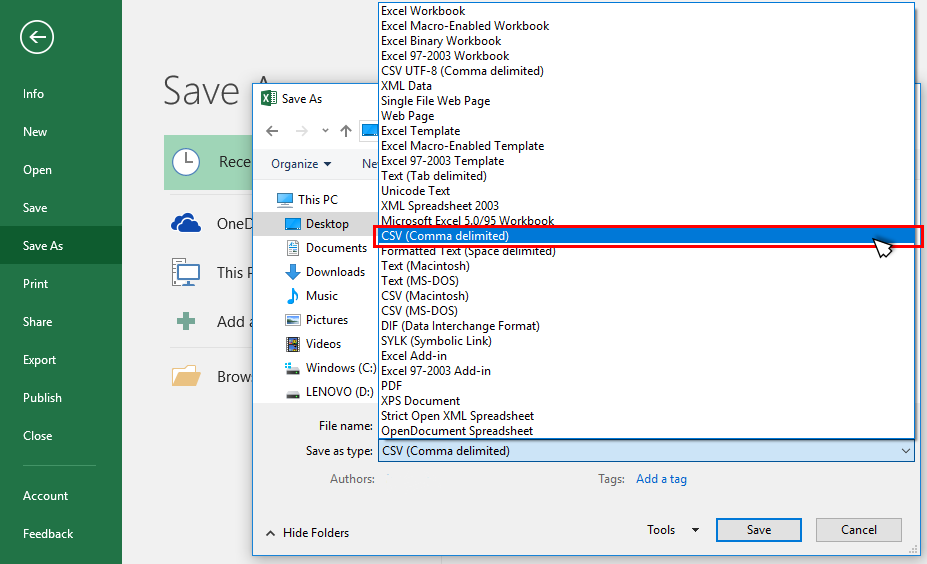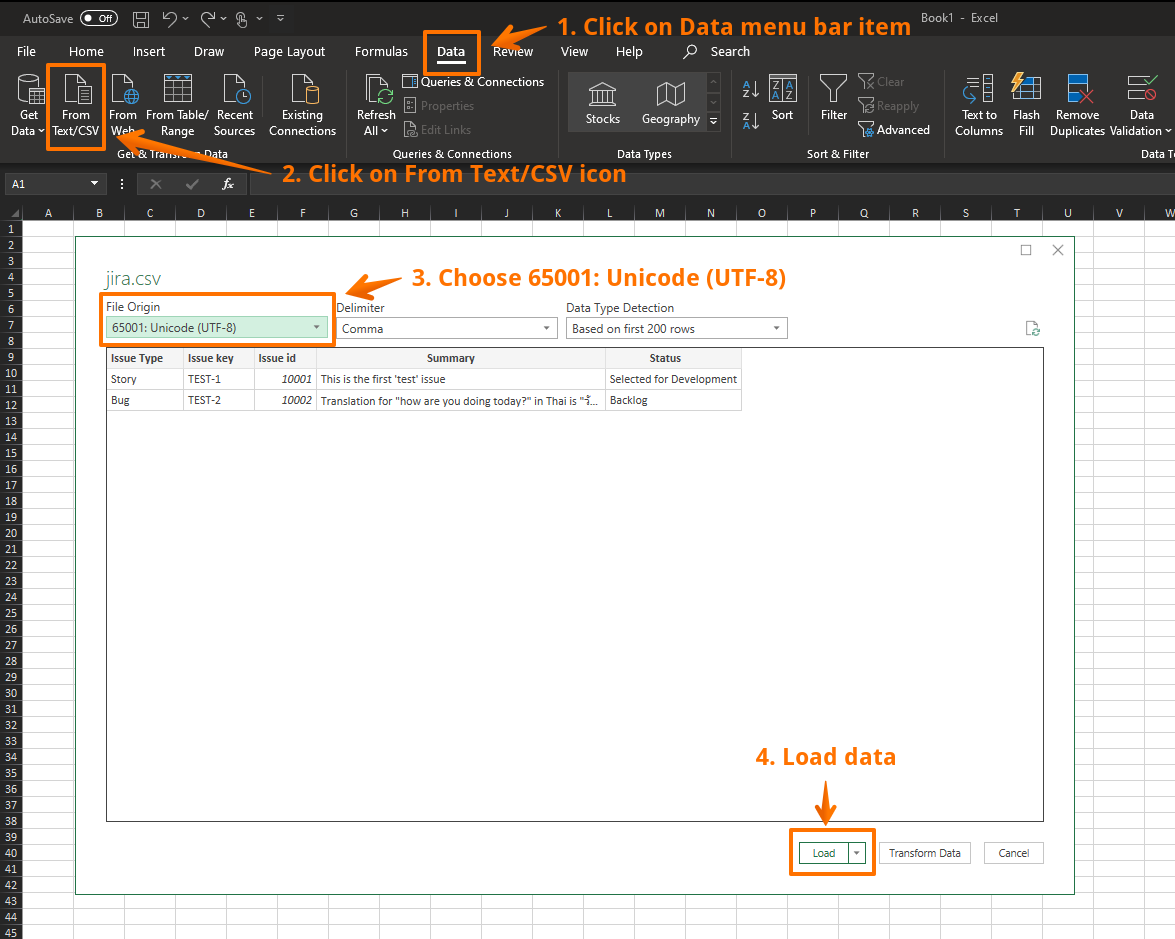

- #Excel for mac save as csv how to#
- #Excel for mac save as csv mac os x#
- #Excel for mac save as csv full#
- #Excel for mac save as csv software#
– In the “Save as type” box under the file name, select “CSV (Comma delimited) (*.csv)”, then click the “Tools” button next to “Save”, and select “Web Options”. – Then, go File -> Save As, and choose a location for your CSV. – When you have your Excel file ready, save it in Excel format somewhere safe, so you can return to it if needed. Unfortunately successive Office versions have hidden the solution further and further from view! Now all sheets or specified sheets are converted to. In the Browse For Folder dialog box, specify a folder to save the exported files, and then click the OK button. Welcome to the wonderful world of “text encoding”! In general, Microsoft favours character sets that only include Latin characters, and I have faced the same problems working with Russian characters that you face here with Japanese. In the Options section, check the Save as type box and then select Unicode Text (.txt) or CSV (Macintosh) (.csv) from the drop-down list.
#Excel for mac save as csv full#
Change the Decimal separator from a comma (,) to a full stop (.) Then click on Ok/Save.
#Excel for mac save as csv how to#
Visit our Teach page to find out how our courses can help learn how to get the best from your data. For Mac OS version 10.10.1, please follow these instructions: Close the Excel application. Read Excel – Using Text Filters to find out how to filter based on the structure of information or Barry’s blogs here. Have I missed something or has google put me wrong? If so let me know…īarry blogs about how to stop chaos in your systems For example, if you want to have tab delimiter or fix width (space) there are save as file type options available, however, given how easy the import wizard is I would have thought they would have done something similar. Change the name and file extension if you want, by default stays as csv even though a different delimiterĪnd that is it, easy right? Hmmmm – if you only wanted to change the delimiter once not an easy/simple process.In Excel, activate the worksheet whose data you will save as CSV, and click File > Save As > Browse. If you require the exported CSV file is encoding as UTF-8, this method will help you achieve it. Export data in active worksheet to CSV UTF-8. Change the ‘Save as type’ to ‘CSV (Comma delimited)(*.csv)’ So far, all data in the active worksheet has been saved in a CSV file.Open the Excel file you want to export to a pipe delimited file (Using Microsoft Excel form Mac version 15.18)Can see delimiters for the columns in the import steps, but no-where is there an option for defining what the line ending character is.&xA.

#Excel for mac save as csv mac os x#
This is because Excel on Mac OS X adds old type of line ending that may be incompatible with the PHP configuration on your server.
#Excel for mac save as csv software#
After a little head scratching and a quick google, I found I had to make a global setting change in the control panel (Yes, that’s right). If you save it as a regular CSV file inside Excel on Mac OS X, you may have trouble importing the CSV file into s2Member. Import the CSV file into a spreadsheet software (like Excel or Numbers) and then add your password encryption. I use Excel 2010 and was expecting to be able to do something like ‘save as’ and select the file type ‘CSV (Comma delimited)(*.csv)’ and then have the option to select the delimiter like when importing a csv file. On first glance it was not as simple I thought. The problem is as stated in the title - when the file is saved the encoding is changed to ANSI, rendering theįile incompatible for the import process.Recently I was tasked to create a pipe delimited file from an Excel Spreadsheet, a simple task you would expect. Our CSVs are UTF-8 encoded - they need to be opened in Excel, more data inputted, and saved (to be imported back into the system they came from).


 0 kommentar(er)
0 kommentar(er)
